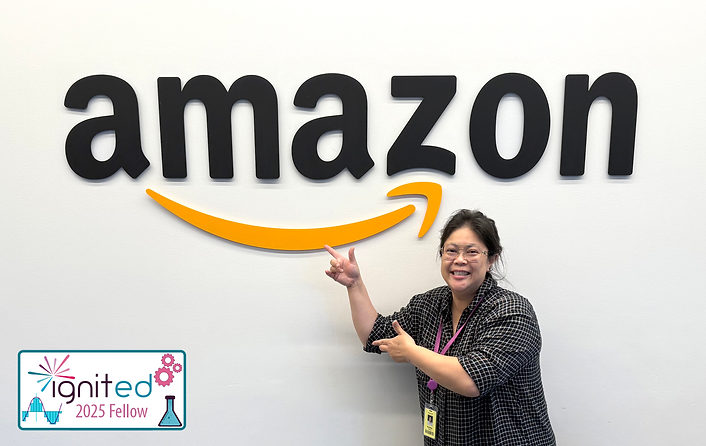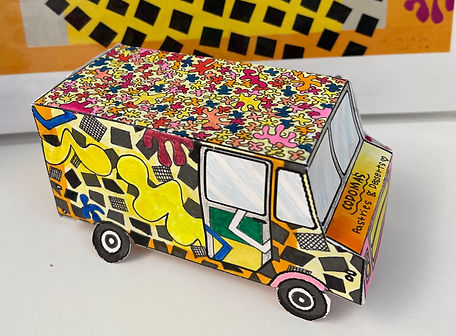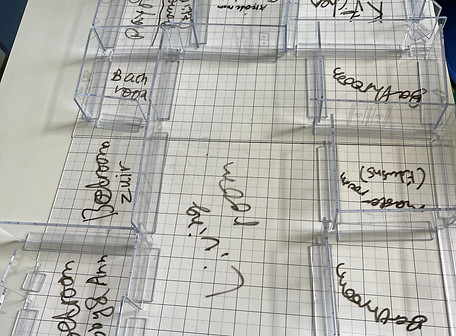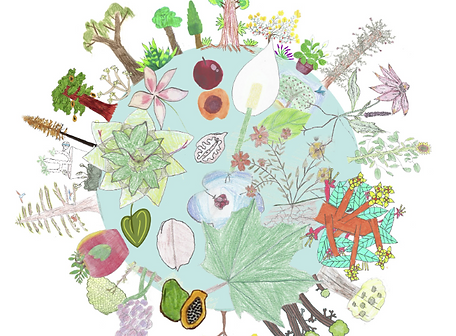


Do you believe kids can change the world with their ideas?
Be the teacher who inspires STEM education through art-based innovation!
Art-based innovation is a low-risk entry point for students to engage with STEM - science, technology, engineering, and math. Don’t let lack of materials or time hold you back. Even just one Innovation Hour can be enough to inspire a student. Giving students time to innovate isn’t just tinkering—it’s helping them see they have the power to make the world better through making things.

Inspiration
free, self-serve resource for teachers
This website is a free, self-serve resource to help teachers bring an innovation mindset into the classroom. It supports students in building skills for 21st-century careers. The idea began during my Ignited fellowship at Amazon Lab126, a tech company known for innovation.
As part of my Ignited fellowship, I surveyed 30 public school teachers (TK - 6th grade) in Silicon Valley. The top barrier to teaching innovation was lack of resources and materials—followed by not enough time and not knowing where to start. This project website begins with the idea that innovation can start with just a pencil, paper, and imagination. No fancy tools needed.
What We Aim to Empower
Along with teaching 21st-century skills and academic content, we focus on three core values that guide students. Click here to force a free copy of our slide deck.
.png)
.png)
WAYS TO TEACH
Innovation means creating new ideas that lead to change. There are many ways to teach innovation.
Innovation starts with imagination, paper and pencil.

.png)
USE A FREE TEMPLATE
The free lesson plan template offers suggested components for leading an innovation lesson. You don’t need to complete every part—feel free to adapt based on your time, space, materials, or the age and developmental needs of your students. Even if students engage in just one or two parts—like exploring, brainstorming, prototyping, or reflecting—you’re already sparking innovation. The main goal is to inspire creative thinking, not to follow every step perfectly.
TRY A PRE-MADE LESSON
Innovation Standards (based on NGSS & CCSS)
Providing students with makerspace opportunities to create original art offers a low-risk, engaging entry point into STEM (Science, Technology, Engineering, and Math). This project highlights two core standards—one in art and one in science—both of which share the design thinking process as a common thread. Additional standards can be integrated based on each teacher’s preferences, comfort level, needs, or experience.
sTUDENT-lED iNNOVATION

What if we loosened the constraints of strictly following CCSS and NGSS, and took a step back from teacher-led innovation? How might we implement student-led innovation—like a Genius Hour?
If we want students to lead their own innovation, how do we help them believe their ideas are valuable? After all, what makes great innovators so great are their ideas.
While there’s no exact formula for coming up with great ideas, teachers can still support students in developing them. To understand how, let’s look at the story The Taste of Banzo’s Sword from Zen Flesh, Zen Bones by Paul Reps and Nyogen Senzaki.
Matajuro Yagyu was the son of a famous sword fighter. But his father didn’t think he was good enough and told him he couldn’t become a master. Matajuro didn’t give up. He climbed a mountain to find a great teacher named Banzo. At first, Banzo said Matajuro wasn’t ready to be his student. Matajuro begged to learn and asked how long it would take. Banzo replied, “Maybe your whole life.” Matajuro promised to work hard, but Banzo warned that rushing would only make it take longer. Matajuro agreed to be patient and spent years doing chores—without ever touching a sword. Then one day, Banzo surprised him with a wooden sword—and from that moment on, Matajuro had to defend himself at any time. After many surprise attacks and constant practice, Matajuro became the greatest swordsman in the land.
So back to the question: how do we help students come up with great ideas?
Just as Banzo helped Matajuro build his reflexes as a swordsman, teachers help students develop their reflexes as innovators. Our role isn’t to hand students those skills, but to create opportunities for them to grow. Students become the greatest innovators by staying open and ready for when ideas come. When their minds are prepared, innovation happens more naturally.
Even though there’s not always clear guidance for student-led innovation, just giving students space to explore, create, and dabble is the first step. And sometimes, even during teacher-led innovation, a student may suddenly want to explore an idea on their own. When that happens—just let them. That spark might be the beginning of their greatest idea.
Generate Innovation Tasks with AI
This section is for teachers to craft innovation tasks using an AI template with their preferred AI app or device. It’s meant to support lesson planning—not to input specific student or school data. Before using AI, always double check with your district about current policies on AI use in education. Together, teachers and students are the innovators—but AI templates can help us innovate too.
Try Our Free Apps
Society needs problem-solvers now more than ever—and we need them working together. What better place to start than with our students, the next generation of innovators? Together, teachers and students are the innovators. With the right tools, our free AI apps can help us imagine what’s possible.
.png)
Growth & IMPACT
The InnovatorsTogether.com project is designed to grow from the ground up—starting with one teacher, one makerspace, and one small idea. By experimenting with pilot lessons and embracing a low-barrier approach to innovation, teachers can spark creativity in their classrooms and build momentum. Over time, these efforts can lead to meaningful impact, attracting community support, funding, and sustainable growth. Innovation doesn't need to start big—it just needs to start.
SUPPORT
Additional Supports
Tools to meet the needs of all learners (UDL, SEL, ELL, SPED)
UDL: Modalities (visual, kinesthetic, auditory learning), manipulatives, visual slides. See Debrief Questions and 3 Big Ideas for visual slides.
SEL: Makerspace Norms, literature connections. See 3 Big Ideas for norms, Lesson Hooks for literature connections, and Debrief Questions for reflection.
MLL: Sentence Frames, Graphic Organizers. See HMW Question for sentence frames on HMW question. See Design Process for graphic organizer on design process.
SPED: Hands-on learning, manipulatives, Warm Ups. See Warm Ups to build creative confidence.
Materials:
Lesson Plan with Formative & Summative Assessment
How Might We Question Brochure
References
IDEO. (n.d.). What’s the difference between human-centered design and design thinking? IDEO Design Thinking. https://designthinking.ideo.com/faq/whats-the-difference-between-human-centered-design-and-design-thinking
This resource is valuable because it breaks down the human-centered design process and clarifies how it differs from design thinking—based on insights from IDEO, the world’s leading design thinking consultancy and industry authority.
IDEO. (n.d.). Build your creative confidence: 30 circles exercise. IDEO. https://www.ideo.com/journal/build-your-creative-confidence-30-circles-exercise
The 30 Circles activity is valuable because it helps students build creative confidence. This exercise originates from IDEO, a global leader in innovation and design thinking.
Hasso Plattner Institute of Design at Stanford (d.school). (n.d.). How might we questions. https://dschool.stanford.edu/tools/how-might-we-questions
“How Might We” questions originated from Stanford d.school, a leading institution in design thinking for education. They are used to spark open-ended, human-centered problem solving.
Garrett, J. J. (n.d.). The elements of user experience. http://www.jjg.net/elements/
This book is an excellent resource on the elements of user experience (UX) design for the web, helping readers understand the principles behind customer obsession.
Graham, P. (n.d.). How to get startup ideas. Retrieved July 7, 2025, from https://paulgraham.com/startupideas.html
This article, written by a Y Combinator founder, offers insight into what makes a great idea and how to think creatively and critically about startup innovation. It emphasizes that great ideas often emerge naturally when the moment is right.
Reps, P., & Senzaki, N. (Comps.). (2023). Zen flesh, Zen bones: A collection of Zen and pre-Zen writings (Hardcover ed.). TarcherPerigee.
This story reminds us that some lessons can’t be instantly taught or transferred—they require practice and experience, so the skills are ready to surface when the moment calls for them.
Keywords
Design thinking, innovation, elementary school, art integration, customer–centered, self-serve resources, technology, funding, community support, grants
#InnovatorsTogether
Society needs innovators to solve problems more than ever—and we need innovators together more than ever. Share how you’re inspiring innovation using the hashtag #InnovatorsTogether!
Are you interested in contacting me?









.jpg)






